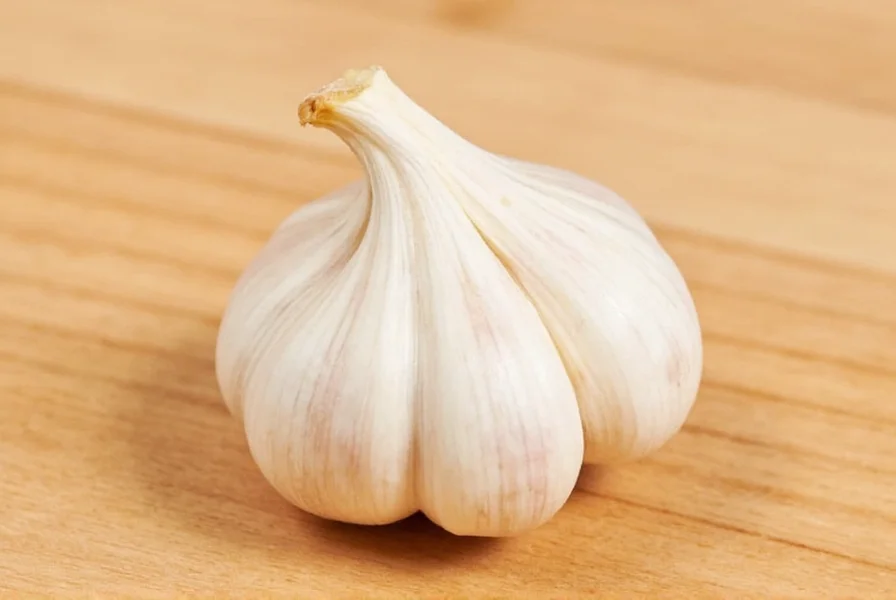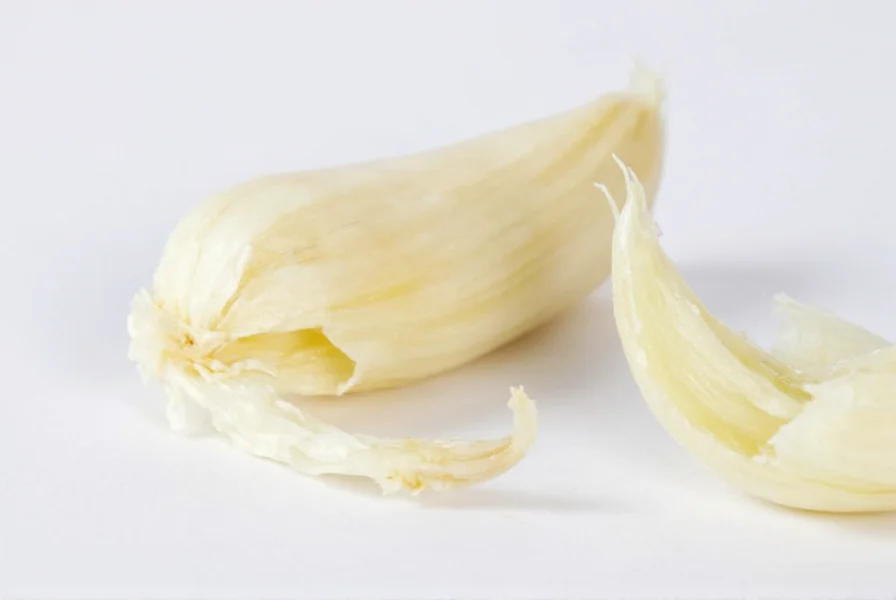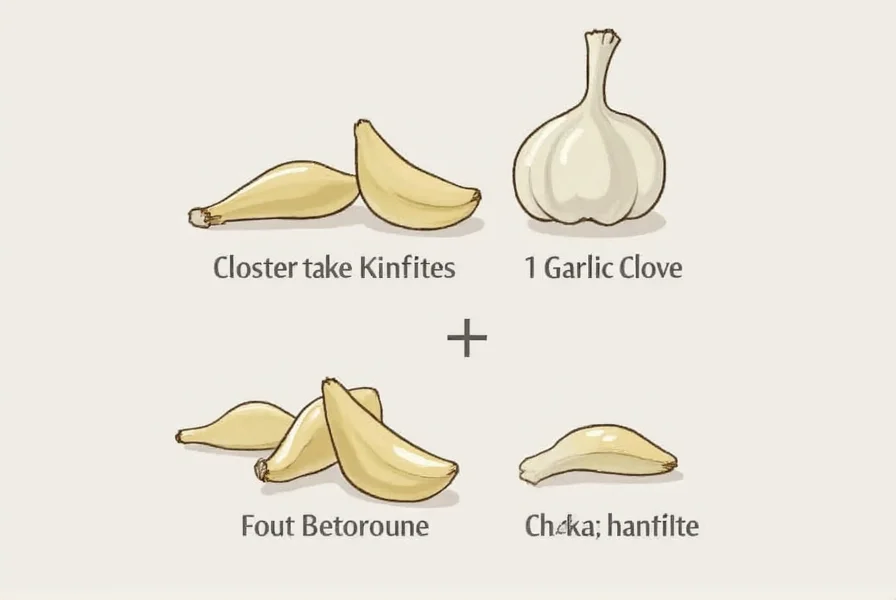When converting garlic measurements for cooking, getting the proportions right makes all the difference in your final dish. Many recipes specify garlic in teaspoons of minced garlic, but you're likely standing in your kitchen with whole cloves. Let's break down this common kitchen conversion with practical guidance you can use immediately.
Understanding Garlic Clove Variations
Garlic cloves aren't uniform in size, which directly impacts your teaspoon conversion. Commercial garlic typically comes in three standard sizes:
| Garlic Clove Size | Approximate Weight | Minced Garlic Equivalent |
|---|---|---|
| Small | 3-5 grams | 1/4 teaspoon |
| Medium (most common) | 6-9 grams | 1/2 teaspoon |
| Large/Jumbo | 10-15 grams | 3/4 to 1 teaspoon |
This garlic clove to teaspoon conversion chart provides reliable measurements for recipe accuracy. When a recipe calls for "1 clove of garlic," it typically assumes a medium-sized clove yielding about 1/2 teaspoon minced. However, if you're working with heirloom varieties or freshly harvested garlic, sizes can vary significantly more than supermarket garlic.

Factors Affecting Garlic Measurement Accuracy
Several variables influence how many teaspoons of garlic you'll get from a single clove:
- Preparation method - Minced garlic packs more densely than roughly chopped pieces
- Moisture content - Freshly harvested garlic contains more water than store-bought bulbs
- Compression - Pressed garlic yields less volume than hand-minced due to expressed liquids
- Age of garlic - Older bulbs dry out, reducing volume while concentrating flavor
For the most accurate garlic clove to teaspoon conversion, weigh your garlic when precision matters most. Professional chefs often use 5 grams as the standard weight for a medium garlic clove, which translates to approximately 0.18 ounces or 1/2 teaspoon when finely minced.
Practical Kitchen Applications
Understanding how many teaspoons equal one garlic clove helps you adapt recipes based on what you have available. When converting fresh garlic measurements:
- For delicate dishes like fish or light sauces, use the lower end of the conversion range
- In robust recipes like stews or roasted meats, you can safely use the higher end
- When substituting jarred minced garlic, remember it often contains preservatives that slightly alter flavor
- Fresh garlic generally provides more complex flavor than pre-minced alternatives
Many home cooks wonder about the garlic clove equivalent in recipes that specify tablespoons instead of teaspoons. Remember that 3 teaspoons equal 1 tablespoon, so 6 medium cloves would yield approximately 3 tablespoons of minced garlic. This knowledge proves invaluable when scaling recipes up or down for different serving sizes.

When Precision Matters Most
Certain culinary situations demand exact garlic measurements rather than approximations. These include:
- Preserving recipes where garlic affects shelf life
- Baking applications incorporating garlic (like breads or crackers)
- Creating infused oils where garlic quantity impacts safety
- Developing consistent restaurant-quality dishes at home
For these critical applications, consider using a kitchen scale for the most reliable results. The question of how much minced garlic equals one clove becomes particularly important when working with expensive specialty garlic varieties like black garlic or elephant garlic, which have dramatically different size-to-flavor ratios.
Frequently Asked Questions
How many teaspoons is one large garlic clove?
A large garlic clove typically yields between 3/4 to 1 teaspoon of minced garlic. Jumbo cloves from specialty varieties can sometimes produce up to 1 1/4 teaspoons when finely minced. For precise measurements in critical recipes, weighing the garlic (10-15 grams for large cloves) provides more accuracy than volume measurements.
Can I substitute bottled minced garlic for fresh cloves?
Yes, but with adjustments. Most culinary experts recommend using 1/2 teaspoon of quality bottled minced garlic as equivalent to one medium fresh clove. However, bottled garlic often contains citric acid or other preservatives that slightly alter flavor. For best results in delicate dishes, use fresh garlic; for everyday cooking, the substitution works well with a 50% flavor intensity adjustment.
Does roasting garlic change the teaspoon measurement?
Roasting reduces garlic's volume by approximately 25% due to moisture loss, but concentrates the flavor. One medium roasted clove yields about 3/8 teaspoon of soft, caramelized garlic. When substituting roasted for raw garlic in recipes, use 25-30% more volume to achieve similar flavor impact, as roasting mutes garlic's sharpness while enhancing sweetness.
How do I convert garlic powder to fresh garlic?
The standard conversion is 1/8 teaspoon of garlic powder equals one fresh medium garlic clove (or 1/2 teaspoon minced fresh garlic). Garlic powder has approximately 3-4 times the concentrated flavor of fresh garlic due to dehydration. When substituting, start with less powder and adjust to taste, as its flavor distributes more evenly throughout dishes.
Why does my minced garlic measurement differ from recipe expectations?
Several factors cause measurement discrepancies: clove size variation, chopping technique (fine mince vs. rough chop), moisture content, and even garlic variety. Hardneck varieties typically have larger cloves than softneck. For consistent results, weigh your garlic (5g per medium clove) rather than relying solely on volume measurements, especially when cooking for others or following precise baking recipes.











 浙公网安备
33010002000092号
浙公网安备
33010002000092号 浙B2-20120091-4
浙B2-20120091-4